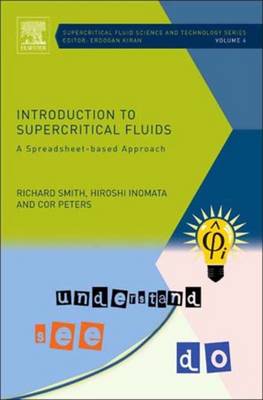Supercritical Fluid Science and Technology
1 primary work
Book 2
Introduction to Supercritical Fluids
by Dr Richard Smith, Hiroshi Inomata, and Cor Peters
Published 1 January 2013
This text provides an introduction to supercritical fluids with easy-to-use Excel spreadsheets suitable for both specialized-discipline (chemistry or chemical engineering student) and mixed-discipline (engineering/economic student) classes. Each chapter contains worked examples, tip boxes and end-of-the-chapter problems and projects.
Part I covers web-based chemical information resources, applications and simplified theory presented in a way that allows students of all disciplines to delve into the properties of supercritical fluids and to design energy, extraction and materials formation systems for real-world processes that use supercritical water or supercritical carbon dioxide.
Part II takes a practical approach and addresses the thermodynamic framework, equations of state, fluid phase equilibria, heat and mass transfer, chemical equilibria and reaction kinetics of supercritical fluids. Spreadsheets are arranged as Visual Basic for Applications (VBA) functions and macros that are completely (source code) accessible for students who have interest in developing their own programs. Programming is not required to solve problems or to complete projects in the text.
Part I covers web-based chemical information resources, applications and simplified theory presented in a way that allows students of all disciplines to delve into the properties of supercritical fluids and to design energy, extraction and materials formation systems for real-world processes that use supercritical water or supercritical carbon dioxide.
Part II takes a practical approach and addresses the thermodynamic framework, equations of state, fluid phase equilibria, heat and mass transfer, chemical equilibria and reaction kinetics of supercritical fluids. Spreadsheets are arranged as Visual Basic for Applications (VBA) functions and macros that are completely (source code) accessible for students who have interest in developing their own programs. Programming is not required to solve problems or to complete projects in the text.
